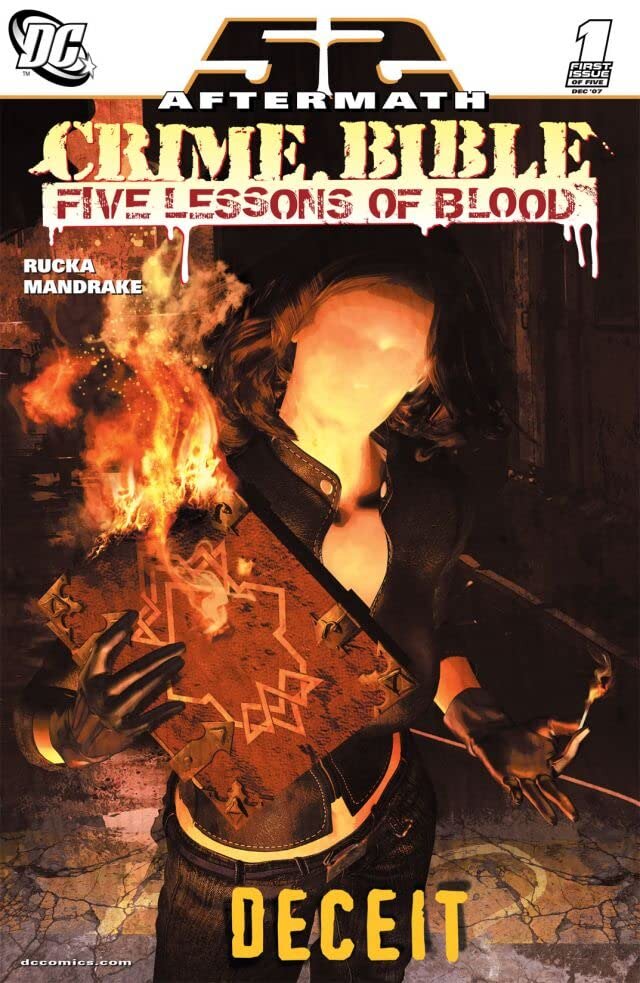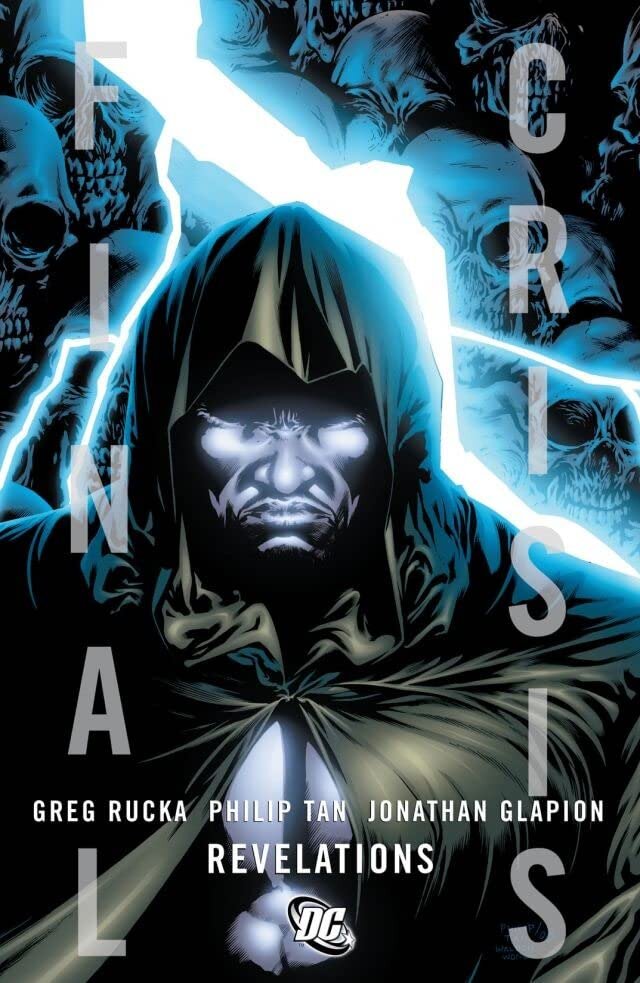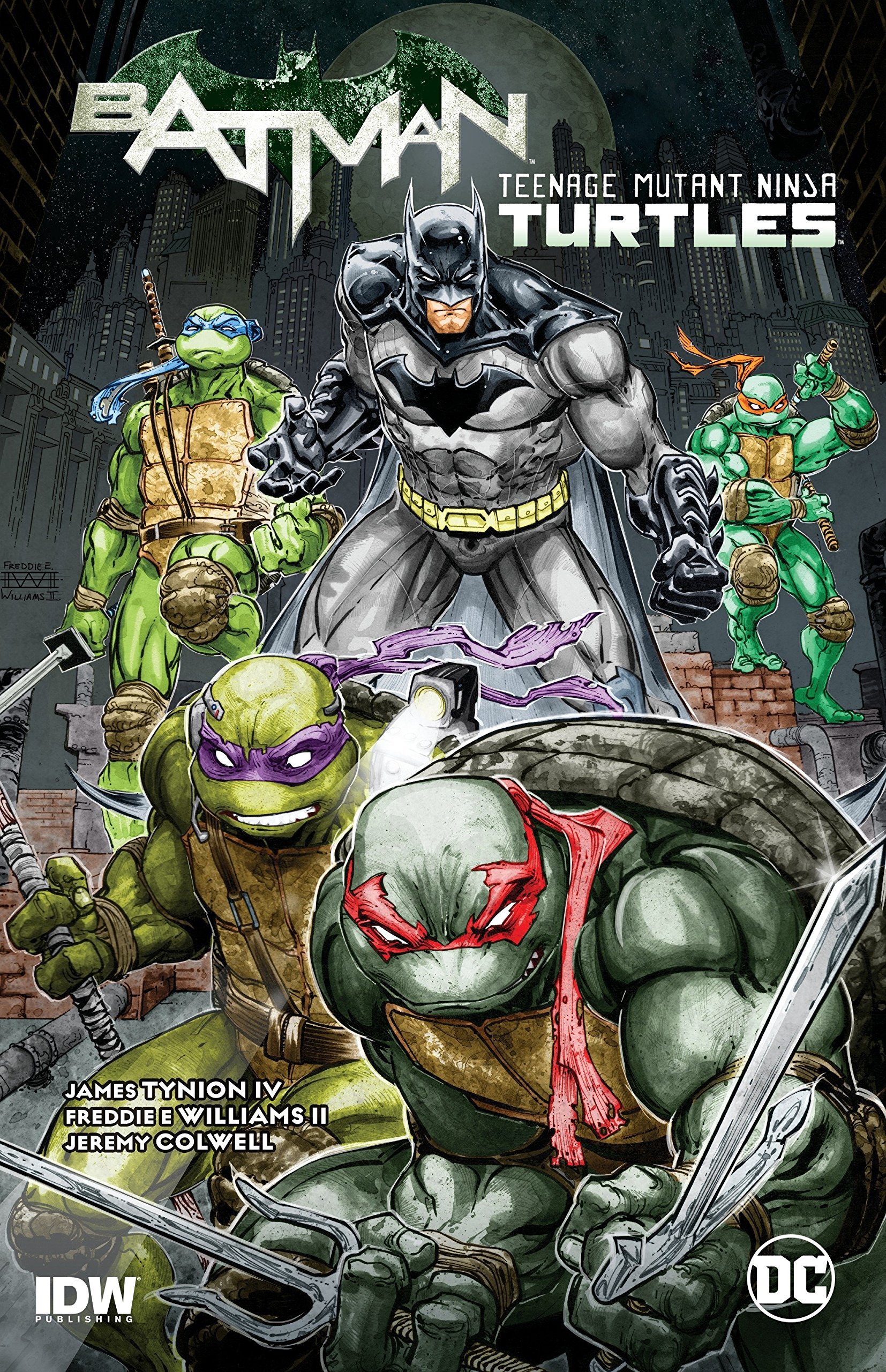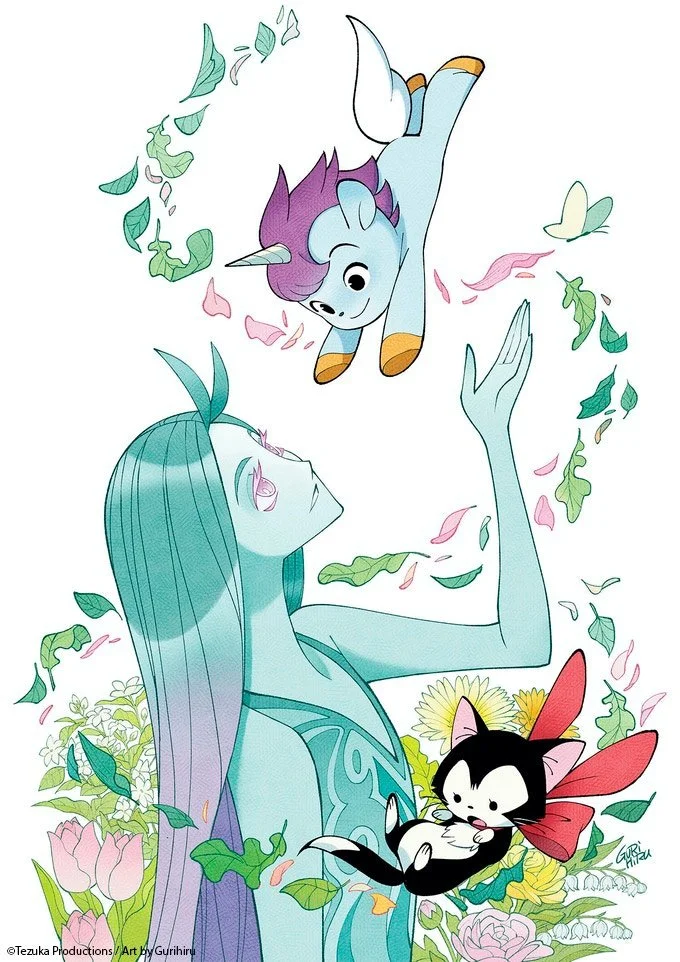Renee Montoya's Rise as The Question: A Parable of The Faceless
By Taylor Pechter — Through the 2000s, Renee Montoya was a character that went through tremendous growth. Originally introduced in Batman: The Animated Series as a foil to hard-nosed lieutenant Harvey Bullock, she quickly became a fan favorite. After her introduction to the Batman comics in 1998, she also became a mainstay in that line of books.
Montoya’s development was mainly spearheaded by writer Greg Rucka, whom is still seen as the definitive writer for the character. From her uneasy relationship with Two-Face, to the iconic Half a Life story in Gotham Central, Rucka brought Renee to new heights of character development. His run with her as a character would reach its peak later in the decade when she ascended to the role of The Question after the seminal year-long series, 52.
From 2007 to 2009, Rucka crafted three separate arcs starring Renee within three different books that explored her exploits against the Religion of Crime as well as the ghosts of her past. These arcs are The Five Books of Blood, Pipeline, and the Final Crisis tie-in series, Revelations, and they’re what we’re going to be discussing here today.
Renee Montoya, The Question - The Five Books of Blood
“And the caitiff gazed upon her, and saw then that she was without faith, and empty… And to he saw his reflection upon her face,” says the Book of Lilith, also known as the Crime Bible. The book that is the namesake of the Religion of Crime, whose lessons teach of the sins of The First, Cain. Published in late 2007 and running until early 2008, Crime Bible: The Five Lessons of Blood (retitled The Question: Five Books of Blood for the collection) was written as a direct aftermath series to 52. It follows Renee. In her first adventure as the Question tracking down separate members of the Religion of Crime. The series is told in five issues, broken up into the four “books” or “lessons” of blood, each according to one of the deadly sins perpetrated by Cain. Each issue is bookended in the beginning with experts from the Black Book, detailing each lesson, designed masterfully by Eric Trautman with a scratchy illustration provided by Steve Lieber.
The first lesson, Deceit, sees Renee track down a professor named Stanton Carlyle, who is spreading lies about the existence of the Crime Bible. He ultimately meets his fate by the hands of his crazed wife, stabbing him in the neck with scissors. Lust, the second lesson, takes place in a brothel run by Mother Superior, a higher up in the Religion of Crime. Here we meet Elicia, a prostitute that makes Renee give into her desires for pleasure, but it does not come without regret afterwards. The penultimate lesson is that of Greed. A copy of the Crime Bible has been given to the Penguin for sale. What will happen if the word is read by the wrong eye? Renee must take the book, but also make sure the one she loves forgives her if she gets in her way. Murder is the fourth and final lesson. Renee returns to Hub City, Vic Sage’s old stomping grounds. A mysterious rash of police killings have hit the city. It turns out one of their own snapped and was killing people within the department. However, in the end Renee practiced mercy as she tried to save the officer. It was to no avail, as he fell to his death. As this parable winds down, she faces Flay, her shadow through the entire series, the teacher of these “lessons”. In victory, she ascends to the leader of the Order of the Stone.
Joining Rucka on this series is a cadre of artists that help define each issue. Tom Mandrake’s harsh and scratchy linework in the first issue helps put forward the duplicitous nature of the book of deceit. While Jesus Saiz’s sultry pencils with deep inks draw your eye in a lustful gaze. Matthew Clark’s sharper features combined with the jagged borders on the panels bring forward the avaricious nature of greed. The gritty simplicity of Diego Olmos gives off a brutalness that fits perfectly for a tale of murder. Manuel Garcia, joined by inker Jimmy Palmiotti, rounds out the team as his more weathered style gives the end of this teal a nice vintage feel. They are all brought together by the coloring talents of David Baron, Santi Arcas, and Javier Mena, who all add earthy tones of brown and tan to hammer home the gritty, noir tone.
Overall, The Five Books of Blood is a fantastic start to Renee’s tenure as The Question. Her character is fully realized and the character interactions are second to none. Not only that, but the exploration of the worst side of human manipulations through each “lesson” leads to a very engaging read.
Renee Montoya, The Question - Revelations
Crispus Allen is dead. The victim of corruption and murder. A ghost that lingers in the shadow of vengeance. The judgment of God, also known as the Spectre. This story of vengeance, mercy, and the grey area in between are explored within the five-issue mini series Final Crisis: Revelations. Not only does this burden fall upon the shoulders of Crispus, but also his former partner, Renee Montoya. After Cris was murdered by corrupt police coroner Jim Corrigan (no relation the previous host of the Specrtre), Renee tracked him down, wanting to exact vengeance for her fallen partner.
However, she doesn’t end killing Corrigan, practicing mercy. However, this did not stop Corrigan from meeting his fate at the hands of Crispus’ own son, Jacob Allen. Forced to take his son’s life in the name of God, Crispus starts to question his belief. Why has God forsaken him to be his fist? Is his free will forfeit by the hand of God? This dichotomy is brought forth by the introduction of The Radiant, God’s divine being of Mercy. Taking the host of nun Sister Clarice helps Crispus seek forgiveness.
While all this has been going on, Cain has risen. As the world burns in anti-life, Renee must confront the immortal Vandal Savage, who’s marked face has signaled the rise of Cain. With his followers, Savage seeks to kill the Spectre with Spear of Destiny, exacting his personal vengeance on Spectre. So, in a way, the concept of vengeance, whether is should be considered justice for the sinner or not, and if mercy can be granted to the sinner, is something that intertwines Crispus, Renee, and Savage. As the story closes, we see Savage defeated, Crispus accepting his role as the Spectre, and Renee denouncing her place as leader of Order of the Stone.
Joining Rucka on art duties is penciller Phillip Tan, inker Jonathan Glapion, and colorists Ian Hannin and Nei Ruffino. Tan’s masterful shadow work combined with Galpion’s thick inking adds a layer of foreboding and dread, as well a grandness when it comes to the Spectre. While the glossy coloring by Hannin and Ruffino can feel a bit garish at times, it helps bring together the scale and thematic resonance of the story.
Renee Montoya, The Question - Pipeline
The third and final part of this trilogy of stories takes the form of Question: Pipeline. Originally published as eight-page backups in the pages of Detective Comics between 2009 and 2010, a book of which Rucka was also writing at the time, this marks one of his final stories in his initial tenure at DC. While lighter on overall theme compared to its predecessors, mainly due to how it was published, it still makes up for it in its breakneck pace, stylish art, and solid character moments. Pipeline sees Renee as she is tracking down an international trafficking ring. Not only do they traffic guns and drugs, but also human beings. Renee is joined on her quest by Helena Bertinelli, the Huntress. Someone who is as sharp with her words and she is with her crossbow. However, a familiar foe strikes again as the final act comes to head. Vandal Savage, also known as Cain, is seeking to rid of his mark. As the evil is defeated, Renee and Helena go their separate ways.
Providing art for Pipeline is Cully Hamner and colorists Laura Martin and Dave McGaig. Hamner’s sleek and dynamic line work, combined with the simple panel layouts, add a restless flow, but also a brutalness when it comes to the fight scenes. Martin and McCaig’s colors also differ from the predecessors. Compared to the earthy, noir tones of Five Books of Blood, and the glossy grandeur of Revelations, Pipeline’s colors are much more textured and brighter, mostly accentuating warm blues and dulcet greens. This combines to give a classic 70’s detective movie vibe. Rucka and Hamner would later reteam, in what could be considered a coda to Pipeline, and Rucka’s work with Renee as a whole, in the two-issue Convergence: The Question tie-in. Here, Renee must say a heartbreaking goodbye to her father, who’s slow death mirrors that of Vic Sage, Renee’s predecessor who died, causing her ascension as The Question.
In conclusion, through these three separate books Greg Rucka and his team of artists crafted one of the defining legacy characters for the ages. Renee Montoya went from being a troubled detective to a faceless protector, a natural and more interesting evolution of The Question character. Through Renee and the characters closest to her, Rucka explored humanity’s darkest impulses in the sins of the Five Books of Blood, the thin line between vengeance and justice, and the power to show mercy, in Final Crisis: Revelations. It is so that this parable ends and with it, the questions and answers of life.
Taylor Pechter is a passionate comic book fan and nerd. Find him on Twitter @TheInspecter.















